 5Likes 5Likes
 |

26 Jun 2014
|
|
Contributing Member
HUBB regular
|
|
Join Date: Aug 2009
Location: Various in Ontario, Canada (no fixed address)
Posts: 38
|
|
[QUOTE=mollydog;470755]Great post Grif ... I agree 100% with just about everything.
Just a new notes and ideas:
==I'm not a fan of BMW sockets. Prefer plain old universal SAE plugs or coaxial plugs. Can be adapted to any format.
For me, this is a tricky call. The "Cigar/Cigarette" sockets are the ones that Powerlet are trying to explain to us as being unreliable and big. Probably true. I have seen a bunch of people use those USB cylinders that take one or connections that just drop into a cig socket. Available and cheap. You get to charge one or two phones off of a single dropin cartridge for something like USD$6. How much does it cost of a Powerlet cable for your phone, and then Ipod, and then something else. They are expensive! $25+ depending on where you live. For 1/10 of that you can buy one or more of those cables, and a couple more bucks buys you a double USB to Cigar socket adapter. Now, if you haven't decided to (over-) do Powerlet sockets, it is a direct connections. Or you can drag around a Powerlet-to-Cigar dongles (yes, I have had failures and had to fix the dongle so I could use the pump!). Don't buy into the hype! One Powerlet might be useful, but count that actually use cases. Each tine you add an adaptor you increase the possibility of failure.
==Headlight? I'm sold on my HID kit. $30, super bright, 3 years on mine. I carry a complete spare system (bulb, ignitor, ballast ... packs small) I have 35W HID, less draw than stock 55W, NO heat. Every Watt helps! Super bright ... 3 times brighter than stock ... very few drivers flash me.
Interested, will watch.
==I would try the Shorai (or similiar Li-Iron) but if it fails, no big deal, go back to standard MF sealed Battery.  If it works it's a PLUS PLUS as it's smaller and lighter than standard battery.
Cold weather performance is advertised. Takes a bit. After one accidental discharge, and cold start, didn't feel like a miracle battery. Ran it in DR650 and DRZ400. Would I use it again (locally)? Yes. At time of departure, for long trip, did not feel tested enough.
==Scott re-usable oil filter? What's the long term consensus? Anyone done oil analysis after four or five oil changes and 20K miles? Honestly, not sure I trust them ... but Man, sure can't beat the convenience. Prove to me they actually filter as good as a paper filter!  This is a tricky one. If we were to carry paper filters and change each time we would be at around 16 paper filters between the two of us. We like to start changing oil at 3000km and max at 4000km.
This is a tricky one. If we were to carry paper filters and change each time we would be at around 16 paper filters between the two of us. We like to start changing oil at 3000km and max at 4000km.
==Great advice on suspension Grif! Plus ONE!!!
==As some know, I'm a CHAIN and Sprocket NUT case. Definitely start with a brand new chain ... go with the BEST DID X ring chain you can buy. Probably good for 20K miles if you treat it right.
Pretty sure that your advice had directly led to our chain and sprockets choice.
For 15T sprocket, I like Suzuki OEM. JT are OK ... bring 3 spare front sprockets, different sizes as Grif said.  The rear sprocket should last "about" 17K to 20K miles if you're lucky. Carrying a spare rear is a PITA ... but a spare would be TOUGH to find on the road. You decide. Thing is, if you change out the front sprockets every 8K miles or so ... then not only will your chain last much longer ... but so will your rear sprocket. (with good maintenance) Lots of rain and MUD riding can change all above numbers ... do the best you can!
I concur with the multiple front sprockets. It makes sense. Any time we are riding in mountainous areas, or off-road tracts, we like to switch to 14 tooth. We did not bring 16 tooth sprockets. We never really found 15 tooth sprockets insufficient, but wouldn't exclude 16 for the next time. With regards to 14t sprockets, why not add an extra one. By definition, they are going to work harder than stock. They also wear more than stock by definition, and are harder to find than stock.
==Spares. Grif covers it very well. The key is to start with NEW stuff. Can't recommend ALL BALLS bearings. Cheap Chinese bearings. Use a brand name like Koyo or stock. Also, as Grif says, start with new Cush Drive rubber cushions and anything else with miles on. I have carried a set of OEM fork seals for the last 30,000 miles, never needed. YMMV. Hard to predict what will wear out and fail. Luckily, if you don't thrash your DR650 ... probably nothing will.
Guys, it depends on your range. I haven't done a "RTW". I suspect that if I was riding down to South America, I would choose to do some replacements before starting the next hop (either side of the hop)., say Africa. You can get most things sent anywhere. Hell, I have seen more stores in Latin America carrying SPF bearings than back in Canada. Bearings are commonplace items.
==I don't think you need to carry spare cables if your cables are NEW to start ... or in perfect condition. Just my opinion. The original cables on our old '96 ... are still good. (throttle, clutch) The clutch is the main one to watch. My '06 with 55K miles ... cables still perfect.
YMMV. I chose to buy some Motion Pro clutch cables in 2010. One clutch cable broke pre-trip (under a week prior). I assumed it was random. The second clutch cable popped in Colombia *exactly* where my new friends did not want me to stop due to FARC activity - I passed just after federal elections. The cable was prerouted and took about 15 minutes to swap out - back to original! (Would not be the case if it was not pre-routed). I believe that these cables where faulty. Vendor nor manufacturer had much to say. I brought it up with the vendor but nothing much came of it. I did not chase them either That said, I will buy MP tools, but not parts that I stick to my bike. I might still have the cable head in which the solder let go revealing a hole all the way through the cable head.
Anyway, what is the reason for not prerouting a clutch and pull cable through frame? Easy insurance, no? Keep in mind that you waiting for a truck, without.
==I agree with Grif, more 17" tires available than 18", and more brand choice too. Stay with stock 17". Don't get too clever listening to all the advice on the forums. Listen to guys who've ridden a DR to where you're going ... and got back!
Agreed. Don't believe the hype. Most 18 inchers will be too narrow. You are back at square one.
== Lastly, I would think carefully about luggage. I hate solid mounted top boxes if riding off road. Same with hard panniers. If you use soft panniers, use lightweight racks, don't over load the bike with crap hanging off everywhere. MINIMIZE.
OK. So above poster does not recommend hard luggage. Fair enough. To each his own. There is sense here. You have suggested that you would like to do an RTW with a lot of off-road. You probably have a computer and a camera, and probably want to hang on to them. What makes you feel comfortable? Where does this stuff go when you take a piss? When you go eat lunch? When leave your bike unattended as you sign into a hotel?
Many take TONS of camping gear ... end up hardly ever using it. I don't camp in Latin America. Too many cheap hotels ... and camping can be isolating. Nor do I cook on the road. I might make Tea or Coffee, that's about it. Each his own ... but I read reports everyday where the bike is overloaded with very seldom used camping gear.
Don't overdue camping gear. I also consider basic camping gear part of my "I got sick and have to boondock on the side of the road gear".
"Latin America" is a diverse place. To make any statement about cost associations universally would be incorrect, and "cheap" is relative. Per person per night? USD$7, $USD10, $USD15, $USD30. I personally have got stuck with paying +USD$100 in the past having to find a place that would take a bike overnight having excluded what I saw as my other options. Now we are travelling two for much longer period.
IMHO, the choice to camp is mostly personal opinion. For example, "back home" if you just hate camping, why start now? That said, for us Boy Scouts and Girl Guides, we learned to camp from an young age. If you are doing a whirlwind tour, probably not bother. If you are heading to the "more expensive" SA countries (Argentina, Chile, Brasil), you might find that these countries are beyond your travel budget.
For motorcycles, if you follow the RV, car and truck people, you will probably be able to camp. Look up the camping section at Life Remotely and similar sites. We stayed at a whole bunch of the places they (LR) recommended in our tent and were generally pretty happy about it. For us, we prefer to camp when we are staying more than one night somewhere. We stayed at many places for 3-4 nights in our tent for what it would have cost for one night in a room. We started to camp in Mexico on the Baja, camped mostly on Mexico, Guatemala, Panama, Colombia and Bolivia. If we were travelling in "their" summer, we would be camping more further south.
Best and only really good camping is in Southern Chile and Argentina. Mexico and Cent. America are mostly NOT GOOD for camping. YMMV. Good luck on the prep!
We haven't camped in Southern Chile or Argentina (bit cold right now, and planning for home). We have great memories of most of our camping locations starting in Mexico. Sometimes you can find yourself staying for close to a week at the same price as one night in a room.
If you decide to camp, and cook a lot, you can always do this in "waves". By this, I mean that if you decide to bring the most simple pot and stove (suitable - you do you fuel for this - your gas tank, hint hint), you can always buy a bigger pot or frying pan when you know that you are going to use it for a while, and toss it later.
We like to have options. We have arbitrary landed ourselves in "gringo" areas in costal Mexico with "back home" rates for hotels (+$100-250) and food (+USD$20 - yikes!). Or USD$7 for a tent spot, ahh.
***A tent is not for everyone*** What a tent can provide:
* Cheaper accommodations
* less tarantulas than the place next door
* 100% mosquito-free compared the expensive bamboo cabañas
* 100% less scorpions
* 73% less venomous snake bites
* 110% more stars than other dwellings
* 33% percent more air than similar tropical dwellings
* 0% chance of less rain.
* 85% chance of better pricavy
 [/QUOTE ]
|

26 Jun 2014
|
 |
R.I.P.
Veteran HUBBer
|
|
Join Date: Aug 2003
Location: california
Posts: 3,821
|
|
[QUOTE=Farkles;471343]
Available and cheap. You get to charge one or two phones off of a single dropin cartridge for something like USD$6. How much does it cost of a Powerlet cable for your phone, and then Ipod, and then something else.
Good info there. I don't run a lot of electronics. But will look into these options. SAE plugs are about $5. But you're right, some adaptors are expensive getting over to USB.
Quote:
Originally Posted by Farkles

Interested, will watch.
|
Yea, for a $30 HID, you're not risking much. I get my kits from DDM Tuning.
(Chinese) But you can call them in SoCal and talk to a real person ... but kits are shipped from China.
As I said, traveling, I carry a complete HID spare kit, plus my original H-4 Bulb, which is useless. The other thing is how easy the HID is to install cleanly into the DR650 headlight. Some DR riders go for the twin filament HI-LO bulb. But wiring is more complex for that. Now, my 35 Watt single bulb kit is ON in the low beam position (handlebar switch). In HI beam, it's OFF, which is good when starting or when saving watts in general.
Quote:
Originally Posted by Farkles

Cold weather performance is advertised. Takes a bit. After one accidental discharge, and cold start, didn't feel like a miracle battery. Ran it in DR650 and DRZ400. Would I use it again (locally)? Yes. At time of departure, for long trip, did not feel tested enough.
|
I tend to agree with you on this. I'd love for the Shorai and others to get good enough and reliable enough to count on when traveling. For now, I'll start with a NEW, sealed, MF battery. Thanks for confirming ... I've never used a Shorai ... still learning about it.
Quote:
Originally Posted by Farkles

This is a tricky one. If we were to carry paper filters and change each time we would be at around 16 paper filters between the two of us. We like to start changing oil at 3000km and max at 4000km.
|
Carrying all those filters is OUT! I agree ... it's a tricky problem! How about some weird compromise? I know we can get away with doing a new oil filter every OTHER oil change.
OR ....
So how about this? ... figure 20,000 miles (30K kms) total. On the road I change oil at 3000 miles (5K kms), using GOOD synthetic oil. At this point, oil is still clear, not opaque and well within grade. A good thing.
So, 7 oil changes for the trip. I would be willing to carry maybe 2 or 3 filters. Also, it's possible one may find the COMMON Suzuki DR filter at a Suzuki dealer on the road? This size fits many bikes. (not just Suzuki)
But I would use the Scott ... and run it every other oil change. I think cleaning he Scott filter is key. Must be done well, from what I've heard.
So, 3000 miles on the Scott, then 3000 mi. on paper filter?
Then back to Scott. Crazy? Probably .. 
Quote:
Originally Posted by Farkles

Pretty sure that your advice had directly led to our chain and sprockets choice.
|
Great, glad to be of help.
Quote:
Originally Posted by Farkles

I concur with the multiple front sprockets. It makes sense. Any time we are riding in mountainous areas, or off-road tracts, we like to switch to 14 tooth. We did not bring 16 tooth sprockets. We never really found 15 tooth sprockets insufficient, but wouldn't exclude 16 for the next time. With regards to 14t sprockets, why not add an extra one. By definition, they are going to work harder than stock. They also wear more than stock by definition, and are harder to find than stock.
|
I agree, you don't need a 16T. I've never used one and have spent many long days sat on 80 mph ... with 15T sprocket. The 14T isn't bad on highway either, and I'm comfortable at 70 mph with the 14T. Off road, I could use much lower gearing .... but you can't have everything! 
Just carry a few extra fronts (whatever size) and all should be well. But like I say (and you know this) rain, mud and sand are very hard on chain/sprockets and can shorten life. Clean and lightly oiled seems to work.
Quote:
Originally Posted by Farkles

Guys, it depends on your range. I haven't done a "RTW". I suspect that if I was riding down to South America, I would choose to do some replacements before starting the next hop (either side of the hop)., say Africa. You can get most things sent anywhere. Hell, I have seen more stores in Latin America carrying SPF bearings than back in Canada. Bearings are commonplace items.
|
Good to know you've seen bearings for sale!  I know in Mexico big Truck parts stores have just about every bearing ever made. FAG, SKF, KOYO and more. Better than ANY typical auto parts store in US. In the US, you have to go to a Bearing house or order on line.
I'll be carrying a inner Hub bearing and replacing Steering head bearings before departure. Mine are original and have suffered some off road abuse, so as preventative, I'll install these. The wheel bearings will stay, as my mileage has been split between two sets of wheels. I'm hoping any I need can be found on the road if needed! I've cleaned and greased mine since NEW at every tire change. All good so far! (knock wood!)
Quote:
Originally Posted by Farkles

YMMV. I chose to buy some Motion Pro clutch cables in 2010. One clutch cable broke pre-trip (under a week prior). I assumed it was random. The second clutch cable popped in Colombia *exactly* where my new friends did not want me to stop due to FARC activity - I passed just after federal elections. The cable was prerouted and took about 15 minutes to swap out - back to original! (Would not be the case if it was not pre-routed). I believe that these cables where faulty. Vendor nor manufacturer had much to say. I brought it up with the vendor but nothing much came of it. I did not chase them either That said, I will buy MP tools, but not parts that I stick to my bike. I might still have the cable head in which the solder let go revealing a hole all the way through the cable head.
|
My preference for cables is OEM Suzuki. I would consider pre-routing a clutch cable ... I've got a 10 year old spare I could use. I would NOT do this for throttle ... to easy to foul the routing causing stuck or dragging throttle. Very tight with IMS tank. I see so many done WRONG!
Quote:
Originally Posted by Farkles

OK. So above poster does not recommend hard luggage. Fair enough. To each his own. There is sense here. You have suggested that you would like to do an RTW with a lot of off-road. You probably have a computer and a camera, and probably want to hang on to them. What makes you feel comfortable? Where does this stuff go when you take a piss? When you go eat lunch? When leave your bike unattended as you sign into a hotel?
|
Good observations and questions! 
For me, I don't keep valuables easily accessible on the bike. I use a Camel Back, which has room for extra stuff in it. (iPad, cash, paperwork). Camel Back stays on me. Camera in Jacket pocket.
But walking away from the bike is always a challenge!  None of us can afford to lose anything ... if it's on the bike ... it's needed! 
Security? ... generally try to check into hotel/camp ground before going into town. Everyone handles security differently. Some are Ultra Paranoid, use HUGE metal boxes or Pelicans ... and never trust locals for anything.
I used hard bags too .. but true security is an illusion. All easy to crack into, screw driver and hammer. Gone in 60 seconds. 
Riding partners are good for security. Solo is tough ... I've done plenty and not always easy.
OPTIONS: I often hire kids to watch, or park in Police stations or private homes or private lots. (PAY!) I've been lucky ... only lost minor stuff.
Quote:
Originally Posted by Farkles

"Latin America" is a diverse place. To make any statement about cost associations universally would be incorrect, and "cheap" is relative. Per person per night? USD$7, $USD10, $USD15, $USD30. I personally have got stuck with paying +USD$100 in the past having to find a place that would take a bike overnight having excluded what I saw as my other options. Now we are travelling two for much longer period.
IMHO, the choice to camp is mostly personal opinion. For example, "back home" if you just hate camping, why start now? That said, for us Boy Scouts and Girl Guides, we learned to camp from an young age. If you are doing a whirlwind tour, probably not bother. If you are heading to the "more expensive" SA countries (Argentina, Chile, Brasil), you might find that these countries are beyond your travel budget.
For motorcycles, if you follow the RV, car and truck people, you will probably be able to camp. Look up the camping section at Life Remotely and similar sites. We stayed at a whole bunch of the places they (LR) recommended in our tent and were generally pretty happy about it. For us, we prefer to camp when we are staying more than one night somewhere. We stayed at many places for 3-4 nights in our tent for what it would have cost for one night in a room. We started to camp in Mexico on the Baja, camped mostly on Mexico, Guatemala, Panama, Colombia and Bolivia. If we were travelling in "their" summer, we would be camping more further south.
|
Wow!
All good points for camping!  I get it. You can save a ton of money. Using Hostels/Hotels requires some planning, work ... and LUCK! ... but more and more there are tips on decent places even in the most remote villages. Amazing! Sjoerd Baker's book has been my guide since 2007 for Mexico.
With camping I've found it best to shorten your riding day to allow time to search for a place. If you find organized camping ... then ALL GOOD! I know things are expensive in Chile and Argentina ... so camp grounds there make perfect sense. For Hostels ... you need to make your target town, if you don't ... this is how you can get screwed by Gringo prices. (Done that too!  )
In parts of Mex and Cent. America ... I found it more a challenge to find clean, safe camping. Very dense with people. But that's just me. If you cook, then more time needed to cook, clean up, then break camp then pack it all back up. Over and over again. 
It's personal preference. I prefer spending time in town, conversing, shopping, eating, drinking, working on my Spanish and just hanging out, working on my bike ... OR ... doing absolutely NOTHING!
Camping is constant work. If you find great place and STAY there a few days ... then that really works. But UP - DOWN with the camping set up everyday ... wears on me. YMMV. :confused1:
I've found a few great long term camping places. Always good to take a few days OFF THE BIKE after a few travel days. Paying hotels for a week adds up, so can't argue just how much sense camping can make to many $$$$!
It's all about trade offs, risk management, budget and comfort levels. 
Quote:
Originally Posted by Farkles

***A tent is not for everyone*** What a tent can provide:
* Cheaper accommodations
* less tarantulas than the place next door
* 100% mosquito-free compared the expensive bamboo cabañas
* 100% less scorpions
* 73% less venomous snake bites
* 110% more stars than other dwellings
* 33% percent more air than similar tropical dwellings
* 0% chance of less rain.
* 85% chance of better pricavy
|
Excellent! ... but I have to say I've seen MANY spiders, snakes and HUGE scorpions camping. Been bitten by giant Centipedes. (painful) But point made ... some Hostels are REAL DIVES ... filthy, Bedbug and insect infested. Some times you would be better off outside. 
But I have some stories for you about what happens when you set your tent up in the dark ... and where you end up being when you awake in the morning.   or .. some interesting middle of the night interruptions.

|

28 Jun 2014
|
|
Registered Users
HUBB regular
|
|
Join Date: Mar 2014
Location: Sydney
Posts: 26
|
|
|
Hey all
Just stopping in to let you know I'm still here, so far the advice has been fantastic. I'm adjusting my list accordingly and will repost the first post possibly shortly. Just been flat out at work - 14hr days, 7 days a week!
Not sure if I mentioned it in the first post. But I WILL be going around the world, long term. So my carried / worn gear especially will have to suit that.
Also I've taken your advice and am looking into flying to USA in November to buy and build a dr there. Seems much smarter weather and cost wise.
Cheers!
Steve
|

29 Jun 2014
|
|
Registered Users
HUBB regular
|
|
Join Date: Mar 2014
Location: Sydney
Posts: 26
|
|
Hey all,
Really appreciate the advice given so far. Slowly adjusting my budget to suit (mostly upwards!)
I've ridden this 100cc's of fury through Vietnam:
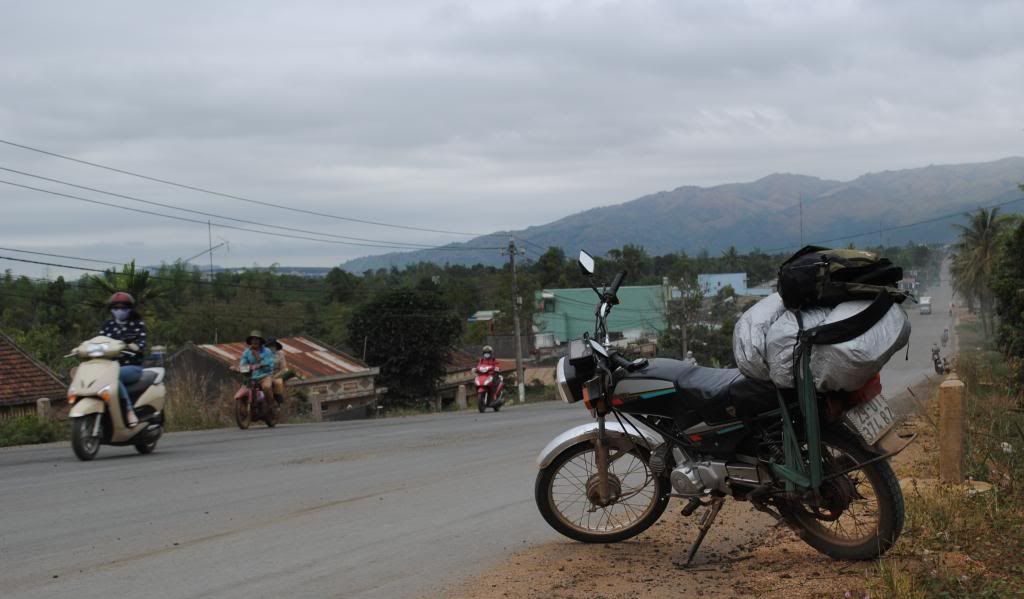
And then tried something similar through the Philippines on this:
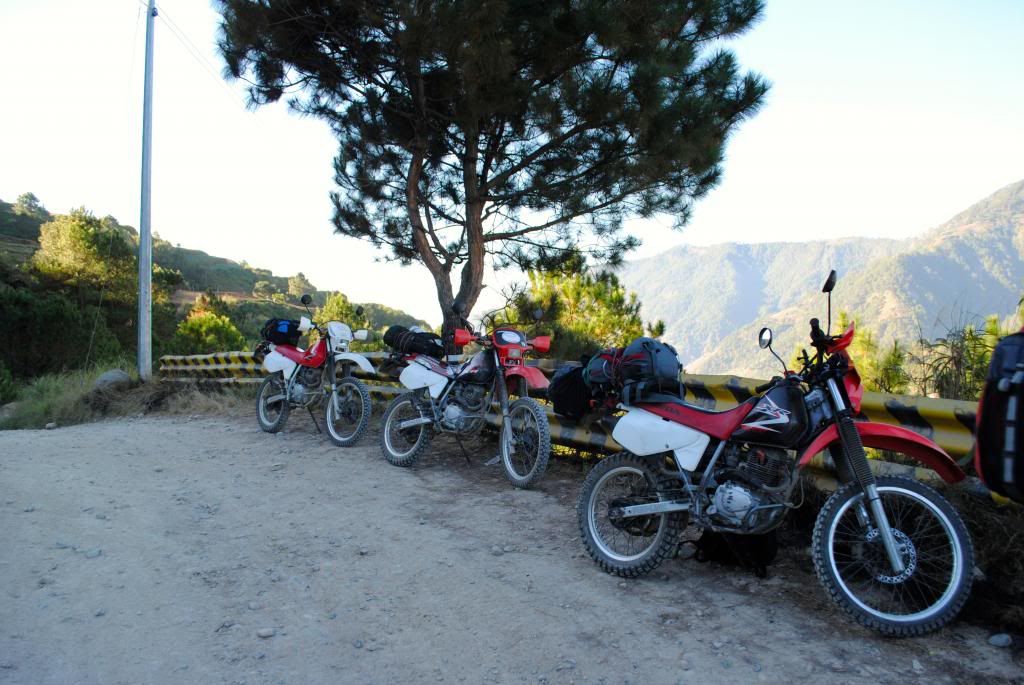
I said "tried":
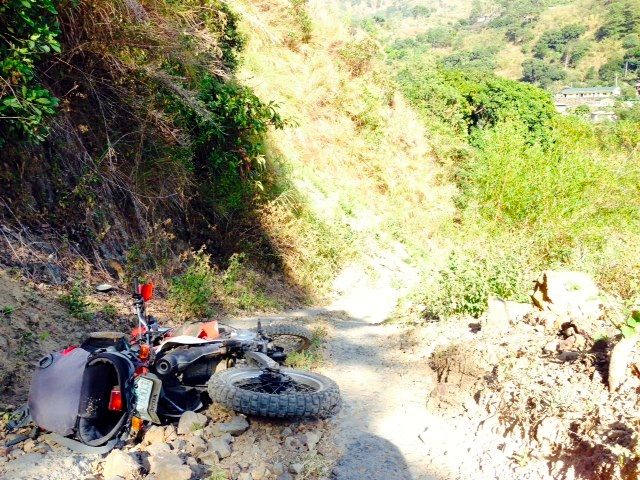
And driven the old girl almost all the way around Australia:
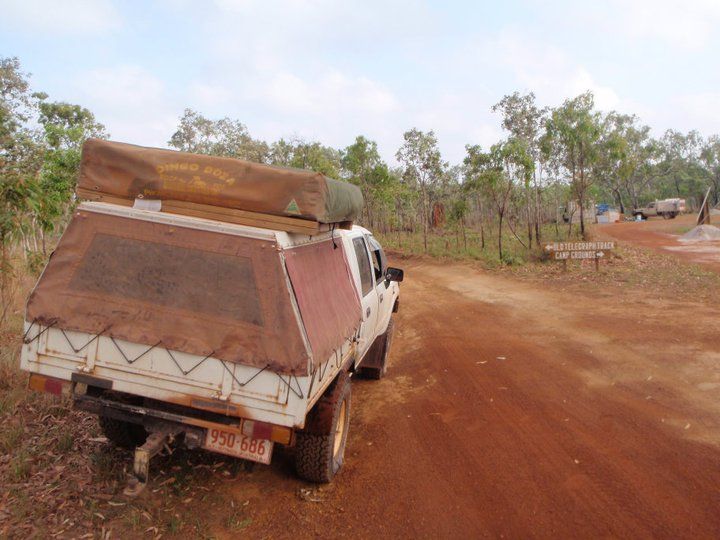
A few of you asked more about what type of riding / route I'll be taking and it's looking a little something like this.
The route is yet to be determined after South America. Currently looking at how long I may take for that section, along with shipping costs (or even possibilities) to eventually get to Vladivostok or just to Africa.
There's a possibility of me doing some months with a certain young lady on the back. This will be mostly on road riding, the odd bit of dirt roads thrown in for a laugh. I'll follow the sun as much as possible, but am quite happy in the cold / rain, camping and riding.
The majority of the ride will be solo, and I want to be able to attempt / focus on mostly off road riding. I've ridden more than enough sports bikes and bitumen tends to bore me when it's not ripping the skin off my bones.
-----
With my current budget, which is mostly a wish list really, I'm looking at around:
$16,000 for the DR650 and quite a lot of mods. Can easily drop this down by about $2k.
$4,000 in camping, riding gear, all clothing, personal equipment and the like
$14,000 Visas, Shipping, Flights, Travel & Medical insurance for two years.
This is mostly rough estimates along with some numbers off Hubb. But it also assumes that I own ZERO equipment, camping gear or underwear so there shall be savings.
This just leaves my daily cost, which varies. Once again, parts of this are purposely inflated estimations and parts are prices off the web / hubb.
Cheers!
Last edited by stevesgonewalkabout; 29 Jun 2014 at 18:23.
Reason: Pics broken
|

30 Jun 2014
|
 |
Contributing Member
Veteran HUBBer
|
|
Join Date: Mar 2004
Location: Saltspring Island,Canada/Poole,UK
Posts: 1,081
|
|
Quote:
Originally Posted by stevesgonewalkabout

With my current budget, which is mostly a wish list really, I'm looking at around:
$16,000 for the DR650 and quite a lot of mods. Can easily drop this down by about $2k.
$4,000 in camping, riding gear, all clothing, personal equipment and the like
$14,000 Visas, Shipping, Flights, Travel & Medical insurance for two years.
|
For a late, low mileage, lightly used DR650 in the US with some modifications already done, you should be looking at no more than $5000 usd and even with most of the mods you've mentioned you should be able to sort the bike completely out for under $10,000 - the main problem/cost is finding a place to stay and do all of the work - with a shipping address, so if you have friends in the US ask them nicely....
You should be able to make savings off the other costs too, the US is THE best place to buy gear. What are your plans for shipping ? South America to South Africa and then North and East ?
|

2 Jul 2014
|
|
Registered Users
HUBB regular
|
|
Join Date: Mar 2014
Location: Sydney
Posts: 26
|
|
|
One possible route is:
North America - Darien Gap - South America -> Africa -> Ride to Europe -> East across Russia -> SE Asia via Korea / Japan -> Indonesia -> Home.
Although I would very much like to find out if I can get from South America directly to Japan / Korea and from there up to Russia. Then west across Russia -> Europe -> Africa -> back up Africa -> somehow -> SE Asia -> Indonesia -> Home.
|

2 Jul 2014
|
 |
Contributing Member
Veteran HUBBer
|
|
Join Date: Mar 2004
Location: Saltspring Island,Canada/Poole,UK
Posts: 1,081
|
|
Hey Steve,
Cost wise the Easterly route will be more efficient and cheaper, heading West you will have 2 major shipping costs, but it is doable I'm sure to ship from South America to South Korea, get to Vlad and go West to Europe, Africa. To SE Asia might be a little trickier but you could go anti clockwise around Africa, head up to Kenya and Ethiopia, then head back South and maybe ship from Durban to Bangkok before heading home. You may run into problems bringing a US registered bike back into Australia as an Aussie citizen without a Carnet, look into that issue or sell the bike in Asia.
Re other points raised:
As for car type 12v power sockets, IME they do not work so well on thumpers, smooth multi cylinder bikes fine, but on thumpers you end up taping, cable tying, bodging plugs into sockets to keep a good connection and its easy to pop fuses or wreck sensitive electronics with poor intermittent connections. The BMW type plugs positively click in and don't rattle loose. Also if you have a Powerlet /BMW socket you can borrow all the shiny expensive gear the BMW crowd carry (compressors etc) when yours (and mine) breaks. Like I said, having a few different options is a good idea, one $25 socket and a couple of plugs isn't much cash on top of a $10,000 bike build, if you want to save money, buy a bike that has already been farkled up with someone else buying all the new parts and taking the hit with taxes and shipping. (that's normally me!)
Oil, buy motorcycle oil when you can, use car oil when you have to, Ive had to use Castrol car 10-40 oil in Bolivia, couldn't find any motorcycle oil anywhere, ran with no problems, just make sure it doesn't say 'energy saving' on the bottle (friction modifiers that will ruin the clutch) that's the beauty of the venerable old DR - they aren't too fussy with oil or gas!
16 tooth sprockets are good if you have to do long stretches of pavement, Nevil used one to ride across Europe and I believe Canada last year on his RTW, I wish id had one a few years ago for some long highway stretches in Chile. At 60 mph/100kmh with 14/42 sprockets the DR pulls 4500 rpm, with 16/42 it sits at 4000 rpm at the same speed or 70 mph/120 kmh at 4500rpm, less engine wear, better fuel economy or you can go a bit faster  makes sense to me. If you are staying off highways/motorways don't use one, if you have to do a bunch of highway riding they work well. I have found with my DR keeping it at or under 4500 rpm is the cut off for better fuel economy.
This is how mine has ended up after 4 years of tweaking.....
I have the Pelican 1500 box mounted fairly well to the rear because we ride 2up, but its not too heavy or big and I like having at least one fairly secure storage, if I use a DR250 light it cant be seen so easily from any angle with the HT rear rack and indicator extensions, yes its big, but its also more visable, im running a stock tail light bulb with the Procycle LED plate light, toolbox holds compressor/tools/tyre levers. Pannier bags are Happy Trail Mojave which fit straight onto the HT SU pannier racks, they have an aluminium plate on the rear and 'pucks' so no straps over the seat, the same mounting system as the HT Teton aluminium panniers. Aerostitch tank panniers, Laminar B king screen with a removable MRA lip works ok, GSXR 40F0 can sounds sweeeeeeet........


Last edited by Gipper; 2 Jul 2014 at 14:31.
|
|
Currently Active Users Viewing This Thread: 1 (0 Registered Users and/or Members and 1 guests)
|
|
|
 Posting Rules
Posting Rules
|
You may not post new threads
You may not post replies
You may not post attachments
You may not edit your posts
HTML code is Off
|
|
|
|
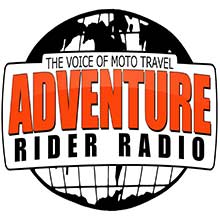
Check the RAW segments; Grant, your HU host is on every month!
Episodes below to listen to while you, err, pretend to do something or other...

2020 Edition of Chris Scott's Adventure Motorcycling Handbook.
"Ultimate global guide for red-blooded bikers planning overseas exploration. Covers choice & preparation of best bike, shipping overseas, baggage design, riding techniques, travel health, visas, documentation, safety and useful addresses." Recommended. (Grant)

Led by special operations veterans, Stanford Medicine affiliated physicians, paramedics and other travel experts, Ripcord is perfect for adventure seekers, climbers, skiers, sports enthusiasts, hunters, international travelers, humanitarian efforts, expeditions and more.
Ripcord Rescue Travel Insurance™ combines into a single integrated program the best evacuation and rescue with the premier travel insurance coverages designed for adventurers and travel is covered on motorcycles of all sizes.
(ONLY US RESIDENTS and currently has a limit of 60 days.)
Ripcord Evacuation Insurance is available for ALL nationalities.
What others say about HU...
"This site is the BIBLE for international bike travelers." Greg, Australia
"Thank you! The web site, The travels, The insight, The inspiration, Everything, just thanks." Colin, UK
"My friend and I are planning a trip from Singapore to England... We found (the HU) site invaluable as an aid to planning and have based a lot of our purchases (bikes, riding gear, etc.) on what we have learned from this site." Phil, Australia
"I for one always had an adventurous spirit, but you and Susan lit the fire for my trip and I'll be forever grateful for what you two do to inspire others to just do it." Brent, USA
"Your website is a mecca of valuable information and the (video) series is informative, entertaining, and inspiring!" Jennifer, Canada
"Your worldwide organisation and events are the Go To places to for all serious touring and aspiring touring bikers." Trevor, South Africa
"This is the answer to all my questions." Haydn, Australia
"Keep going the excellent work you are doing for Horizons Unlimited - I love it!" Thomas, Germany
Lots more comments here!

Every book a diary
Every chapter a day
Every day a journey
Refreshingly honest and compelling tales: the hights and lows of a life on the road. Solo, unsupported, budget journeys of discovery.
Authentic, engaging and evocative travel memoirs, overland, around the world and through life.
All 8 books available from the author or as eBooks and audio books
Back Road Map Books and Backroad GPS Maps for all of Canada - a must have!
New to Horizons Unlimited?
New to motorcycle travelling? New to the HU site? Confused? Too many options? It's really very simple - just 4 easy steps!
Horizons Unlimited was founded in 1997 by Grant and Susan Johnson following their journey around the world on a BMW R80G/S.
 Read more about Grant & Susan's story
Read more about Grant & Susan's story
Membership - help keep us going!
Horizons Unlimited is not a big multi-national company, just two people who love motorcycle travel and have grown what started as a hobby in 1997 into a full time job (usually 8-10 hours per day and 7 days a week) and a labour of love. To keep it going and a roof over our heads, we run events all over the world with the help of volunteers; we sell inspirational and informative DVDs; we have a few selected advertisers; and we make a small amount from memberships.
You don't have to be a Member to come to an HU meeting, access the website, or ask questions on the HUBB. What you get for your membership contribution is our sincere gratitude, good karma and knowing that you're helping to keep the motorcycle travel dream alive. Contributing Members and Gold Members do get additional features on the HUBB. Here's a list of all the Member benefits on the HUBB.
|
|
|